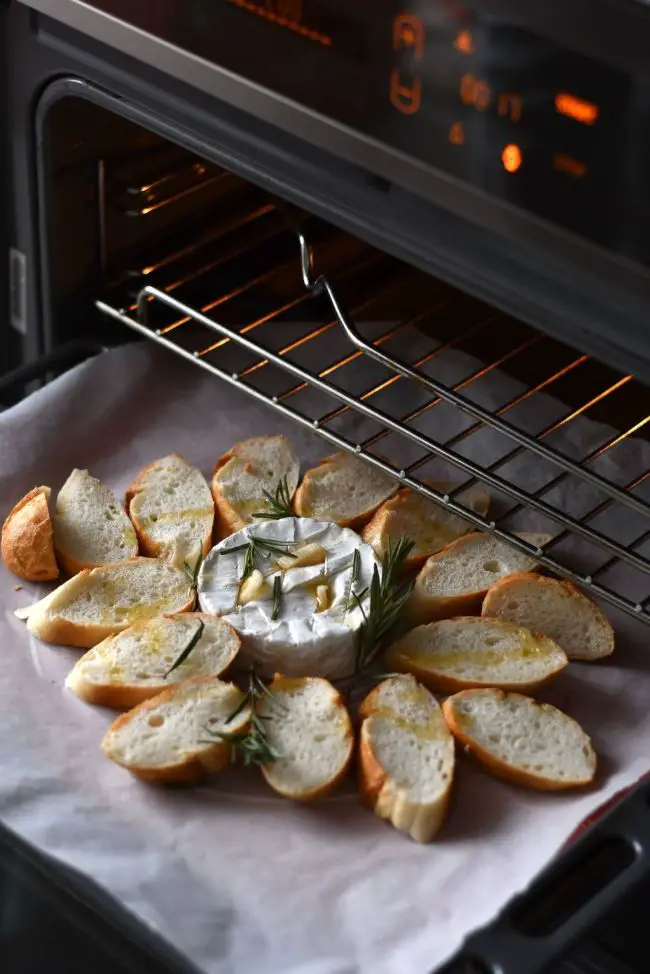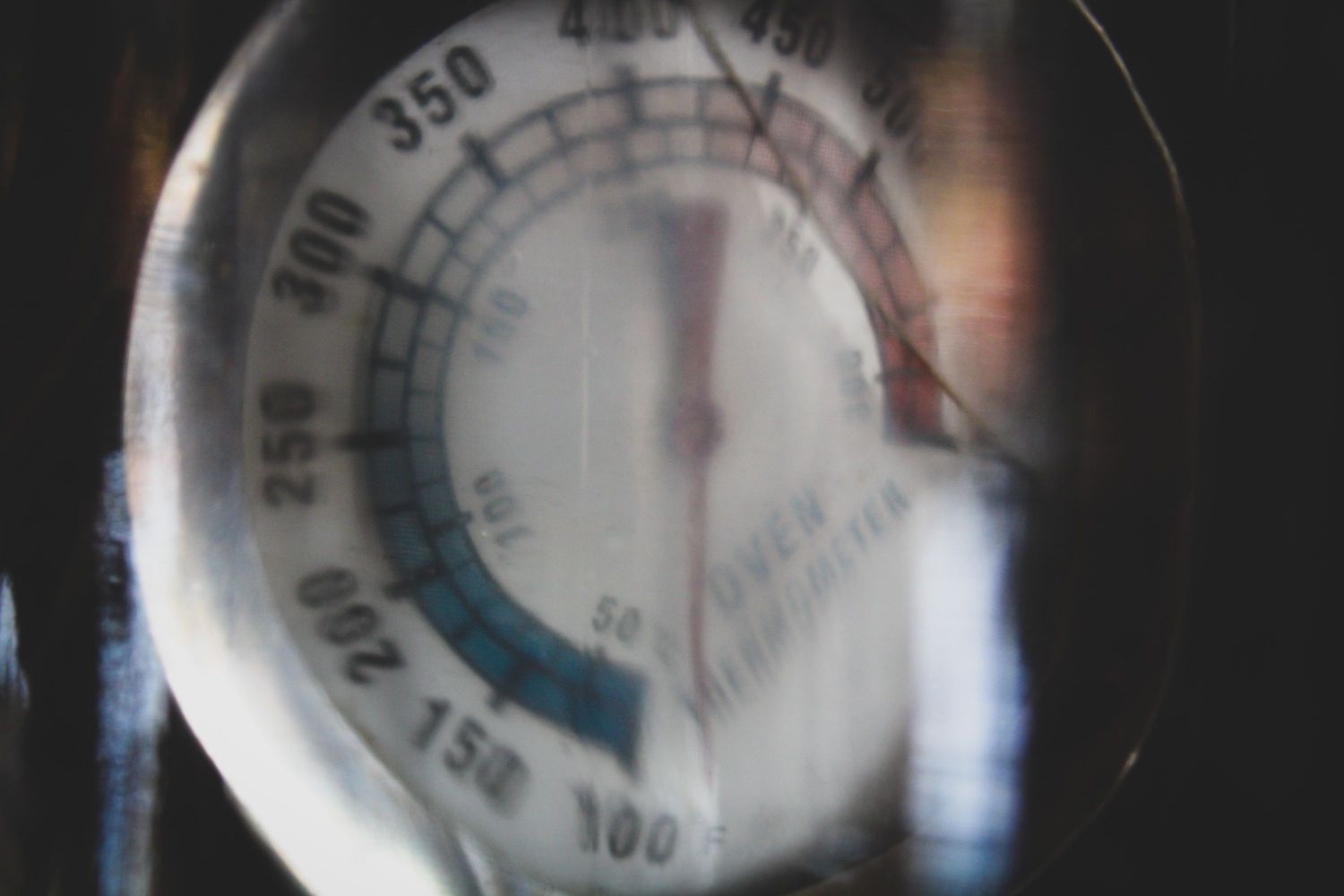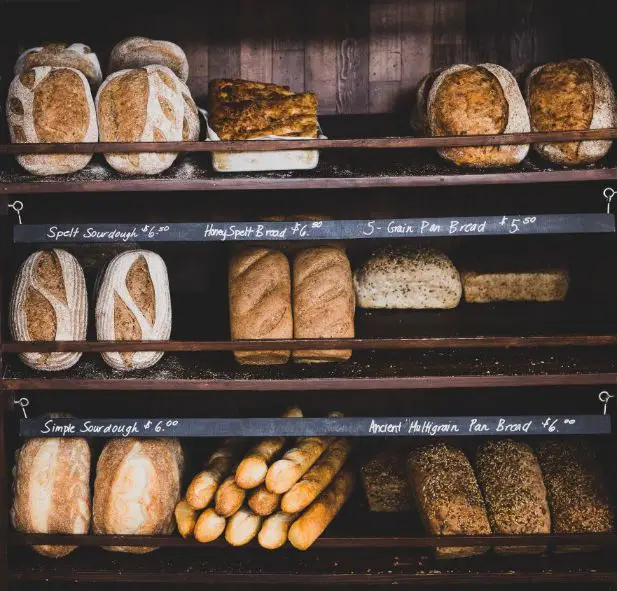Are you tired of burnt bread and you are asking yourself how to stop bread from burning on the bottom? You’re not alone!
There are several reasons why bread can burn on the bottom, including uneven heat distribution, too high oven temperature, improper placement in the oven, and using the wrong type of baking sheet.
But fear not! In this article, I’ll share the possible causes of burnt bread and provide you with 6 tips to stop your bread from burning on the bottom.
Keep reading to learn how to achieve perfectly baked bread every time!
4 Causes of Bread Burning on the Bottom
Before we delve into the solutions, it’s important to understand why bread burns on the bottom. Here are 4 main causes:
1. Uneven Heat Distribution
Uneven heat distribution is a frustrating issue that can affect the quality of your bread. This problem can arise in your oven due to several reasons, including a malfunctioning heating element, improper installation, or the design of the oven itself.
A malfunctioning heating element can cause certain areas of the oven to become hotter than others. In turn, this can cause bread to cook unevenly, leading to burnt or undercooked areas.
To avoid this, make sure your heating element is functioning correctly and replace it if it’s damaged.
Improper installation of an oven can also contribute to uneven heat distribution. A poorly installed oven may not be level or may not be sealed properly, leading to heat escaping and hot spots in certain areas.
Ensure that your oven is installed correctly and level to prevent this issue.
Finally, the design of the oven can also play a role in uneven heat distribution. Certain ovens may be designed in a way that causes certain areas to be hotter than others due to the placement of heating elements or the shape of the oven.
If this is the case with your oven, consider adjusting your cooking methods or using additional equipment like a baking stone to distribute heat more evenly.
2. Oven Temperature Too High
When the oven temperature is too high, it can result in unevenly cooked bread, with the bottom getting burnt before the rest of the loaf is done.
This can be caused by a faulty oven thermostat or an oven temperature that is set too high for the recipe.
Hence, it’s crucial to preheat the oven to the correct temperature as per the recipe instructions and double-check the temperature with an oven thermometer to ensure that it is accurate.
Cooking bread is a precise process, and the right temperature plays a crucial role in determining the outcome.
Therefore, it’s essential to understand the importance of following the recipe’s temperature guidelines and ensuring that the oven temperature is accurate before placing the bread inside.
3. Placement of the Bread in the Oven
When it comes to baking bread, where you place it in the oven can make all the difference. The oven’s temperature isn’t always consistent from top to bottom or front to back, so the placement of your bread will determine how it cooks.

If you put your bread too close to the bottom of the oven, it’s more likely to burn – especially if your oven has a heating element on the bottom.
The bottom of the bread may get too crispy while the top stays doughy, which can be super frustrating after all the effort you put in!
On the flip side, placing your bread in the middle of the oven or on a higher rack will help it cook evenly and give you better results.
The heat is more evenly distributed in the middle of the oven, and you’ll get less direct heat from the bottom.
So, whenever possible, aim to place your bread in the middle of the oven or on a higher rack.
4. Type of Baking Sheet Used
The type of baking sheet used can have a significant impact on the quality of bread baked. Using dark-colored or non-stick baking sheets can absorb more heat and cause the bread to burn on the bottom.
This is because dark-colored sheets tend to retain more heat, and non-stick surfaces inhibit air circulation around the bread, leading to uneven browning.
On the other hand, using light-colored, uncoated baking sheets can ensure even baking by allowing the bread to cook more evenly.
Uncoated baking sheets promote good air circulation around the bread, allowing the heat to distribute evenly throughout the dough, and prevent burning.
When choosing a baking sheet for bread baking, it is essential to consider the color and coating of the sheet.
Opting for a light-colored, uncoated baking sheet can ensure the bread is baked evenly and prevents burning, leading to a delicious, perfectly baked loaf.
How to Stop Bread From Burning on the Bottom – Revealed
Now that you know the possible causes of bread burning on the bottom, let’s look at some solutions:
1. Check the Oven Temperature
One important aspect of baking bread is getting the oven temperature just right. If the oven is too hot, the bread may burn on the bottom.

If you find that your oven runs hotter than the required temperature, you can try lowering the temperature by 25°F to 50°F. This adjustment will allow the bread to bake more evenly without burning on the bottom.
It’s also a good idea to use an oven thermometer to check the accuracy of your oven’s temperature. Sometimes oven thermostats can be inaccurate, which can lead to over or undercooking.
By using an oven thermometer, you can ensure that the temperature is precise and accurate.
Finally, try to avoid frequently opening the oven door while your bread is baking. Every time you open the door, the temperature inside the oven can fluctuate, which can lead to uneven baking.
Instead, rely on the oven light or a timer to keep an eye on your bread’s progress.
2. Consider Using a Baking Stone
Using a baking stone is an essential tool that can help you achieve bakery-quality results in your homemade bread.
Baking stones are typically made of ceramic, clay, or cordierite, and they come in different sizes and shapes to fit your specific oven and baking needs.
One of the significant benefits of using a baking stone is that it absorbs and retains heat, providing a more stable and consistent temperature than the oven’s metal baking sheet.
This is especially important when baking bread, which requires a hot and even heat source to allow the dough to rise correctly.
To use a baking stone, you should preheat your oven for at least 30 minutes to ensure that the stone is thoroughly heated.
When placing your bread dough onto the hot stone, use a pizza peel or a flat spatula to slide it onto the stone to avoid any potential injury from the heat.
Using a baking stone can also improve your baked goods’ texture and flavor, as it creates a crispier crust and a more evenly cooked interior.
Additionally, a baking stone can help reduce cooking time, as the stone’s heat allows for faster and more even baking.
While a baking stone is an excellent tool for baking bread, a cast iron skillet or a pizza pan can also be used as an alternative.
A cast iron skillet can retain heat and provide a crispy crust, while a pizza pan can distribute heat evenly and prevent burning.
3. Don’t Rush the Preheating Process
To ensure that your bread is cooked evenly and prevent it from burning, it’s essential to preheat both your oven and baking sheet.
Preheating the oven and baking sheet helps in evenly distributing the heat, and it also helps to create a consistent baking environment.
When you preheat your oven, it’s important to do so for at least 15 minutes before placing your bread inside.
This allows the oven to reach the desired temperature and ensures that your bread will cook evenly from the start of the baking process.
Preheating your baking sheet is also important as it helps in evenly cooking the bread’s bottom surface.
Placing the bread on a cold baking sheet can lead to uneven baking, and the bread’s bottom may end up being undercooked or soggy.
4. Place the Bread on a Higher Rack
Placing the bread on a higher rack is not only useful for avoiding burning but can also help to achieve a more even bake.
This is because heat rises, and placing the bread on a higher rack allows the heat to circulate more evenly around the loaf.

Additionally, if your oven has a heating element at the bottom, using a baking sheet on the bottom rack can act as a shield and prevent the bread from burning.
It’s important to note that different types of bread may require different oven temperatures and rack placements.
For example, dense sourdough bread may benefit from being placed on a lower rack to allow for more heat to penetrate the dough.
Alternatively, delicate white bread may require a higher rack placement to avoid over-browning the bottom.
If you don’t have a higher rack, there are other options available. A baking stone or baking tray can help to distribute heat more evenly and prevent burning.
Additionally, rotating the bread halfway through the baking process can also help to achieve an even bake.
5. Use Parchment Paper
To prevent burning and make cleaning up easier, I recommend using parchment paper. This simple baking tool can be a game-changer when it comes to baking bread.

All you need to do is place a sheet of parchment paper between the bread dough and the baking sheet. This will act as a barrier and help to distribute the heat evenly, resulting in perfectly baked bread.
In addition to preventing burning, parchment paper can also help to prevent sticking.
When the bread dough comes into contact with the baking sheet, it can sometimes stick, making it difficult to remove from the pan.
Parchment paper acts as a barrier between the dough and the pan, making it easier to remove the bread once it’s finished baking.
To further prevent sticking, you can lightly grease the parchment paper with oil or butter.
This will create an extra layer of protection and ensure that your bread slides right off the parchment paper and onto your plate.
Overall, using parchment paper when baking bread is an easy and inexpensive solution to a common baking problem. It’s a simple trick that can make a big difference in the quality of your homemade bread.
So the next time you’re baking a loaf, don’t forget to reach for the parchment paper!
6. Shorten the Baking Time
In case of difficulty achieving the desired outcome with bread baking, shortening the baking time can be an effective solution.
This will help prevent the bread from burning and also ensure that it is baked thoroughly. As the baking time approaches its end, it is crucial to keep a close watch on the bread to avoid over-baking.
To elaborate on the points, reducing the baking time is one of the last steps to take when attempting to solve problems in bread baking.
While bread can be over-baked, or under-baked, bread can also lead to issues such as a dense texture and lack of flavor.
Thus, it is important to understand how to adjust the baking time according to the recipe and oven being used.
Bread recipes often provide baking times and temperatures, but these are just estimates, and adjustments may need to be made based on the oven and altitude.
Lowering the temperature and extending the baking time can also help prevent burning, but this may lead to a less crispy crust.
The key is to find a balance that works for the specific recipe and oven being used.
When shortening the baking time, it is important to monitor the bread towards the end of the baking process, especially during the last 10 minutes, to prevent burning.
Checking the bread’s internal temperature can help determine if it is properly baked. Bread that is done should have an internal temperature of 190-200°F (88-93°C).
How to Stop Bread From Burning on the Bottom – Conclusion
In conclusion, burnt bread is a common issue that many home bakers face, but it can be frustrating and disappointing after putting in the effort to make a delicious loaf.
However, by understanding the possible causes of burnt bread and implementing the 6 tips outlined in this article, you can prevent the bread from burning on the bottom and achieve perfectly baked bread every time.
It’s important to remember that baking bread is a precise process that requires attention to detail, and even small adjustments can make a significant difference in the outcome.
By adjusting the oven temperature, using a baking stone, and choosing the right baking sheet, you can ensure that your bread bakes evenly and doesn’t burn on the bottom.
Ultimately, baking bread is a labor of love, and with practice and patience, you can master the art of baking perfectly baked loaves every time.
So don’t be discouraged if your first few attempts don’t turn out as expected. Keep trying, and soon you’ll be able to enjoy delicious, homemade bread that’s perfectly baked and ready to be devoured.
Frequently Asked Questions
Will Parchment Paper Stop Bread From Burning?
Parchment paper is typically used to line baking sheets and pans to prevent sticking and make cleanup easier.
While it can help distribute heat more evenly, it won’t necessarily prevent bread from burning if it’s left in the oven for too long or at too high a temperature.
Is Burnt Bread Okay To Eat?
Burnt bread is not ideal for consumption, as it may have a bitter or unpleasant taste and potentially harmful compounds like acrylamide.
It’s best to discard burnt portions and enjoy properly cooked bread for safety and taste reasons.

